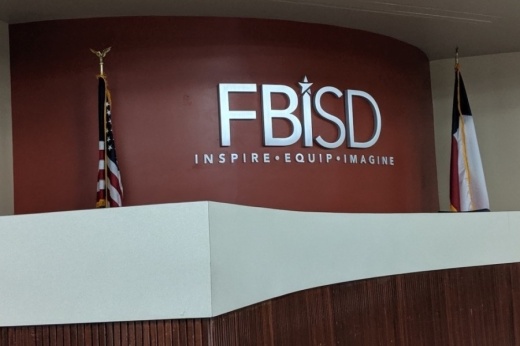Voters approved the district’s $1.26 billion bond package that included the $1.18 billion Proposition A, which provided funds for construction, security and other projects. However, preliminary construction costs are now outdated due to inflation and material and labor costs, district officials said at the Feb. 5 board workshop meeting.
District officials have identified factors causing the shortfall and made plans to shore up the shortage, which will include monthly board updates.
The approach
FBISD Executive Director for Design and Construction Dan Bankhead, who joined the district in November 2023, said various market factors contributed to budget shortfalls, including:
- Inflation
- Material costs increasing 5%-15%
- Freight costs have increased by 15%-20%
- Increasing labor costs
“Nothing has been decided. None of these are the absolutes, but they're all things, tools that we can use to try to address this budget challenge that we're currently experiencing,” Bankhead said.
What they’re saying
Trustee Angie Hanan said she was surprised and concerned the presentation called for possibly putting off construction of schools.
“I'm not a finance person, but we have to do better. And I appreciate the transparency that we're seeing now,” Hanan said. “I do look forward to those more definitive plans that come to fruition ... so we can help our community trust that we're going to do the best job we can on these projects that they went to the polls and voted for to support.”
Other trustees also noted surprise that the estimates are so far off when the projects are less than a year in progress, also noting the consequences to public trust in the district.
The details
New Superintendent Marc Smith said he directed the item be brought to the board after hearing about the issue on his Jan. 22 start date.
Based on the original planning numbers used for the bond projects, the budgeted amounts are off in part due to November updates from the construction planning partner, PBK, Deputy Superintendent Steve Bassett said during his presentation to the board.
Updated project cost projections given to the district in November showed that seven of the bond’s eight major projects are more expensive than the original budget projections.
However, officials told the board that the information was not shared by the district personnel who received it before the district closed for the winter break, and thus they were late finding out about the new projections.
The presentation listed projected shortfalls of the seven equaling $93.6 million are as follows:
- Briargate Elementary School rebuild ($13.7 million)
- Mission Bend Elementary School rebuild ($13.7 million)
- Clements High School rebuild ($27 million)
- Middle School No. 16 ($24.5 million)
- Elementary School No. 55 ($9.7 million)
- Aquatic practice facility ($4.5 million)
- Transportation facility ($500,000)
Other area districts such as Katy ISD, Lamar CISD, and Aldine ISD have also been affected by similar economic circumstances in the past two years, according to the report, totaling over $10 billion in inflationary cost increases in bond project budget projections, according to FBISD.
Going forward
Chief Operations Officer Damian Viltz said the district would make changes to the bond planning process in the future by increasing internal scrutiny of bond projects from inception to completion and providing monthly reports to the board to keep them better informed.
“We've already put in place on how to move forward to mitigate finding ourselves in this predicament ever again,” Viltz said.
What else
In addition, Bassett said the shortfall amount is a projection—not wasted dollars already spent.
“We're being very transparent with where we are now from a planning perspective, and we're hoping that as we come together and we figure these things out, that we're able to bring that number down significantly,” Bassett said. “But it's going to require a lot of work and a lot of communication, and the board will certainly be involved with that.”





